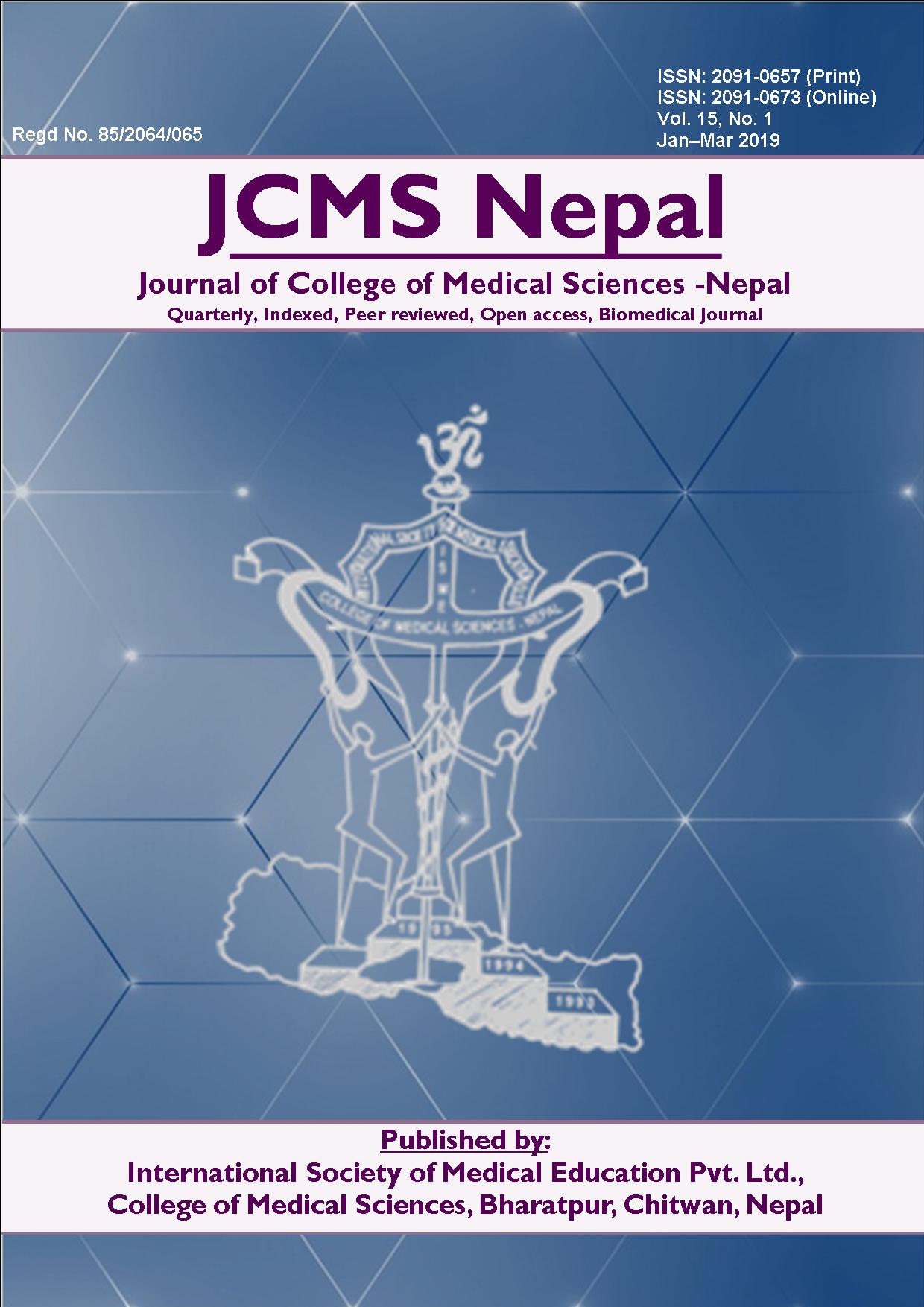Bacterial Load Reduction in Guheswori Sewage Treatment Plant, Kathmandu, Nepal
DOI:
https://doi.org/10.3126/jcmsn.v15i1.19914Keywords:
bacterial load, pathogens, sewage treatment plantAbstract
Background: Water sources such as lakes, ponds, river etc. have been continuously contaminated by the micro organisms and chemicals. The former can pose a significant threat to human health. This work aims at detecting the bacterial load before and after the sewage treatment and hence isolating pathogens from the sewage before primary treatment and secondary treated effluent.
Methods: Grab sampling (50mL sewage before primary treatment and secondary treated effluent) was performed for 20 days in the Guheswori sewage treatment plant. The reduction in microbial load was determined through heterotrophic plate count. Pathogens were screened from the effluent obtained from the secondary treatment plant.
Results: Bacterial load reduction was found to be about 48.02% on average. The observed bacterial load reduction might have been caused by bacteriophage flocculation and sedimentation. Pathogens isolated from the treated effluent were Escherichia coli, Salmonella Typhi, Enterococcus faecalis, Staphylococcus aureus, Coagulase negative Staphylococcus (CONS), Citrobacter fruendii, Enterobacter aerogenes, Proteus mirabilis, P. vulgaris, Pseudomonas aeruginosa.
Conclusions: It has been found that the sewage treatment plant helps to reduce the bacterial load which is, however, not capable of effluent polishing where all pathogens are killed.
Downloads
Downloads
Published
How to Cite
Issue
Section
License
This license enables reusers to copy and distribute the material in any medium or format in unadapted form only, for noncommercial purposes only, and only so long as attribution is given to the creator.




